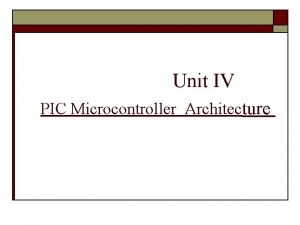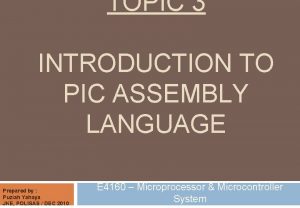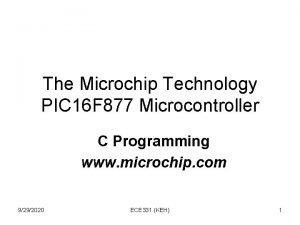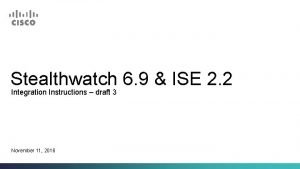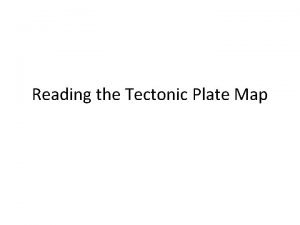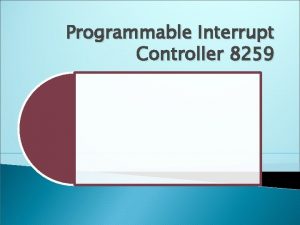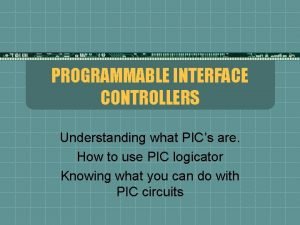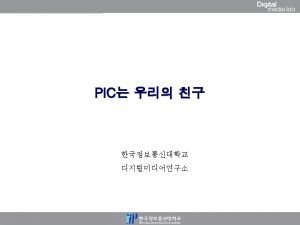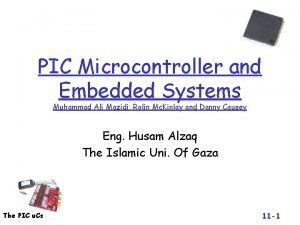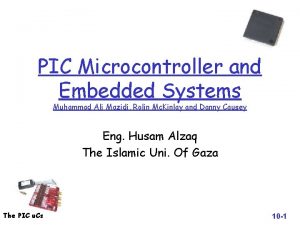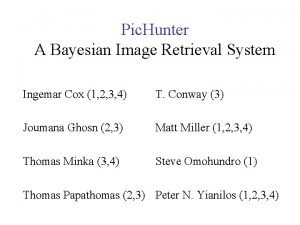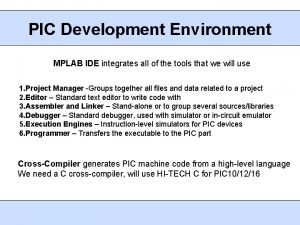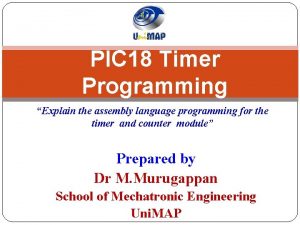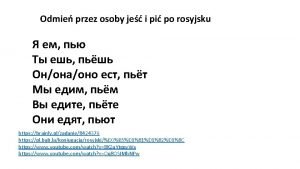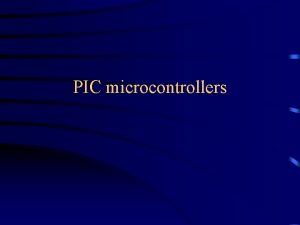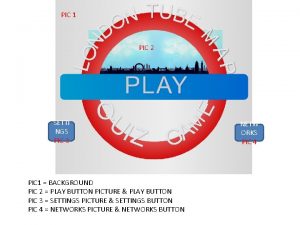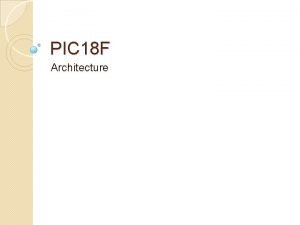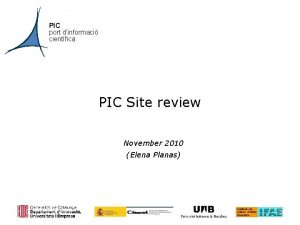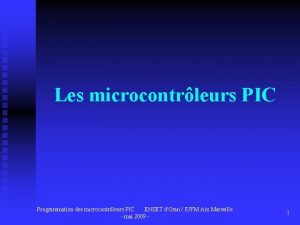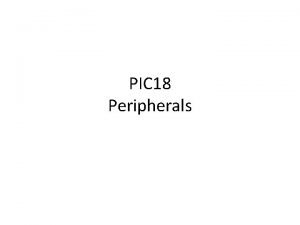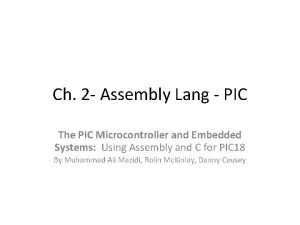PIC ch 2 c 2 5 PIC Data

















- Slides: 17

PIC – ch. 2 c

2. 5 PIC Data formats • Numbers can be – Hex – Binary – Decimal – ASCII formats

• 4 ways to show HEX numbers – – 34 h, 23 H – 0 x 23, 0 X 34 – Nothing, just the value: 23, 45 – h‘ 45’ • E 4 h – x • 0 F – ok! 0 E 4 h – ok! 0 F = 0 Fh

• B’ 01010011’ • b’ 01010011’


ASCII character • A’ 2’ • A’ 9’ • To define ASCII strings [more than one character], use DB (define byte) directive.

• EQU – equate • EQU To assign – fixed data – SFR address [SFR – special-function reg. ] & GPR COUNT EQU 0 x 25 … … MOVLW COUNT ; WREG = 25 h

• ORG – origin • ODG directive is used to indicate the beginning of the address. • ORG must be in hex

• END directive • Last line of the PIC program.

• #include • Tells the assembler to use the libraries…

• radix directive – To indicate the numbering system • Hex? – by default • Decimal? radix dec Numbers will be considered as decimal

• Label: – 1 st character must be an alphabetic char. – 1 st char – NOT number –…

2. 7 PIC prog – assembling & linking • Source file - *. asm • ASM file is fed to the PIC assembler – It converts codes into machine code – Produce object file - *. o, error file *. err

• Linking – – *. hex file – List file *. lst – Map file *. map – Debug file - *. cod • After a successful link – hex file is ready to be burned into the PIC’s program ROM and is downloaded into the PIC Trainers.

Little endian vs. big endian • LE – Low byte goes to low memory & high byte goes to the high mem. address • E. g. , all Intel microprocessors …

2. 9 RISC Q. How to increase the processing power of a CPU? – Increase the clock frequency of the chip. • Higher the frequency, the more power & dissipation – Use Harvard architecture – increase the no. of buses to bring more info (code & data) • PIC 18 has Harvard acrchi. – Change internal architecture of the CPU & use RISC architecture

RISC or CISC? RISC – reduced CISC – complex RISC processors have fixed instruction 1, 2, or even 3 bytes size Large no. of registers – at least 32 reg. - Large no. registers can avoid the need for a large stack to store parameters Small instruction set. -Less instruc. – difficult for programmers! -Large programs. -Need more memory – but memory is cheap now! -PIC 16 has 35 instructions -PIC 18 has 75 instructions CISC – Complete/Complex instr. Set computer! - Not all instrc. are used n not often too. !
 Ric is nic/pic
Ric is nic/pic Ric=nic/pic
Ric=nic/pic Pic
Pic Pic assembly language programming
Pic assembly language programming Pic877
Pic877 Shark
Shark Cisco ise stealthwatch integration
Cisco ise stealthwatch integration Transform boundary pic
Transform boundary pic 8259 architecture diagram
8259 architecture diagram Programmable interface controllers
Programmable interface controllers Pic port
Pic port Pic ng
Pic ng Mazidi pic
Mazidi pic Embedded systems
Embedded systems Pichinter
Pichinter Pic development environment
Pic development environment Pic18 timer
Pic18 timer Odmiana pic i jesc po rosyjsku
Odmiana pic i jesc po rosyjsku


